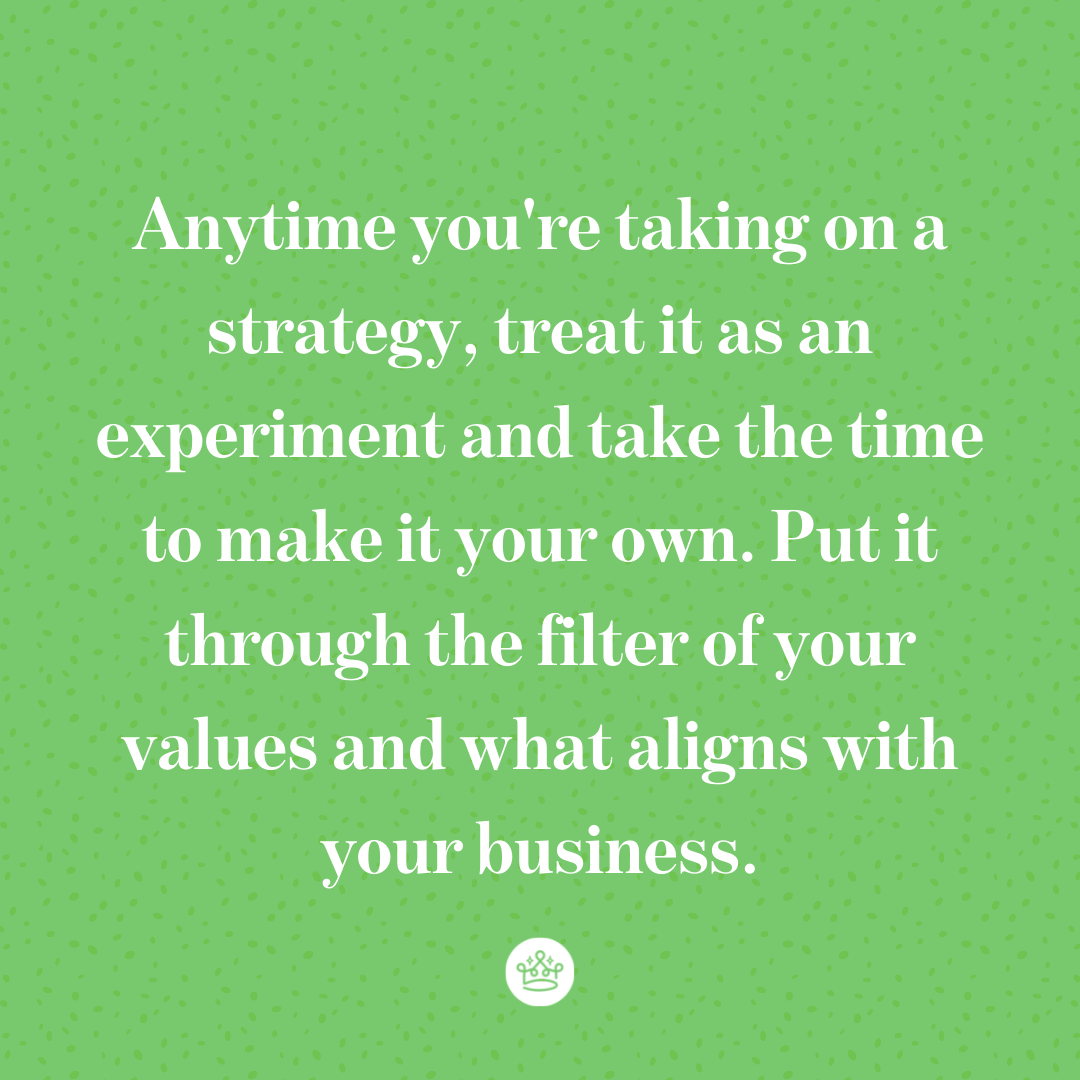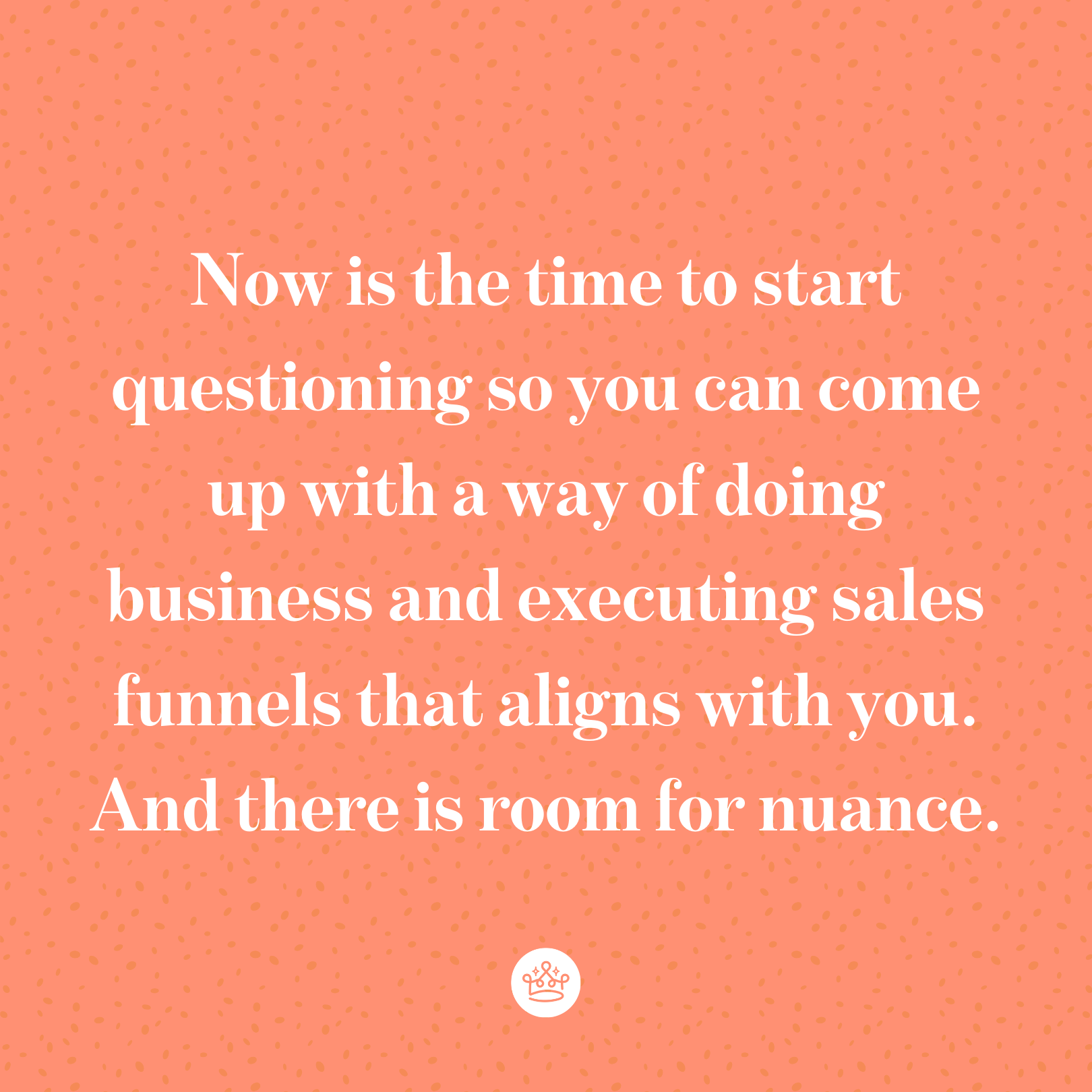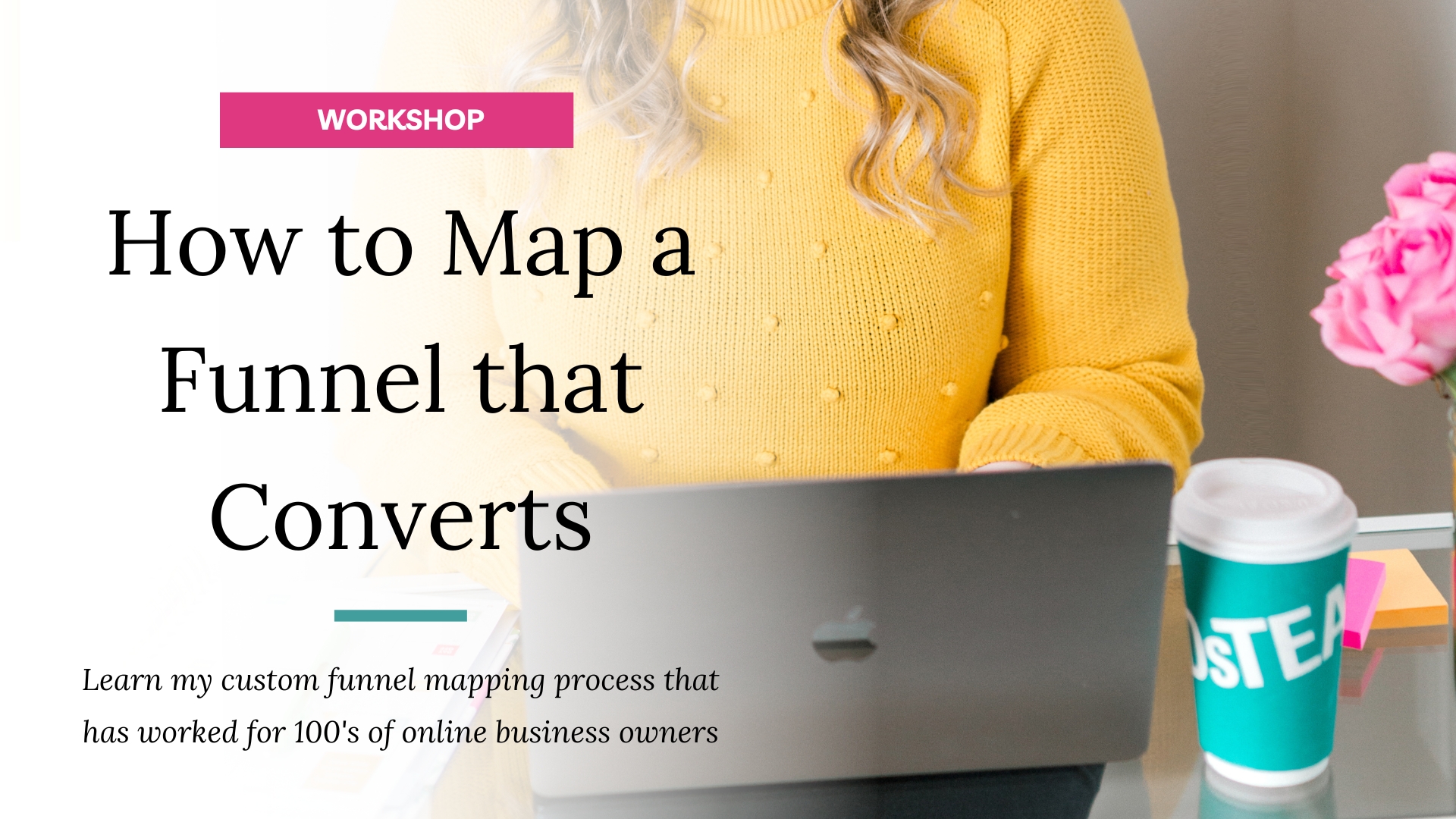Cornerstones of the Unethical Sales Funnel
Let’s start by examining what not to do when building your sales funnel and why these approaches are problematic. After being in the funnel building business for 5+ years, here are what I see as the four cornerstones of the unethical sales funnel.
Unethical Cornerstone One: Overselling Results
When building a sales funnel, we've been told to make the customer or client feel like they're getting a Ferrari for the price of a Volkswagen. Hence the list of bonuses that sometimes come with valuations, like a PDF worth a thousand dollars, or a Facebook group being deemed priceless.
But by overselling results, we put pressure on ourselves to be upping the ante all the time. We’re overselling the value of our offer when it's priced perfectly fine, just the way it is.
The same thing is true with the way we're told to “show, don't tell.” Don't get me wrong. I am a big believer in “show, don't tell” and use case studies all the time. But while testimonials and case studies can be valuable, we also want to make sure we're not overselling the typical results someone will likely get from our offers.
One of the ways to offset this and set realistic expectations is to be clear about the work involved in reaching those brag-worthy results:
- How long did it really take?
- How much time had to be invested?
- What pieces did the client or customer already have that set them up for success?
- What are potential deal-breakers that could get in the way of them succeeding?
Another thing you could do when compiling your social proof for your sales funnel is to ask yourself what your customers and clients get out of you featuring them in that testimonial. Is it tied to an affiliate program, or is there some kind of clout or cool-by-association factor at play? Ask yourself if they would have provided that testimonial without getting that perk. (Keep this in mind when you're investing in other people's offers too, and the testimonials are super persuasive.)
If you find that you're guilty of overselling the typical results that people get from your offer, rework the copy so it sets better expectations for potential customers and use it as an opportunity to improve your offer so it helps your customers get better results.
I have worked with four different instructional designers on my content mentorship program, and each time it was in response to this question: how can I better set up my students to succeed? I believe that for programs I join and services I buy, I am ultimately responsible for the results I get. There are no guarantees in business or in life.
I've learned the hard way that I can't want someone to succeed more than they do. They have to be willing to put in the work, but that's only true if it was accurately described in the marketing and fair expectations were set about what it would take to succeed.
The key thing is that it's always dishonest and unethical to market or sell your offer as something that it's not.
Unethical Cornerstone Two: Applying Excessive Pressure
The subject of applying pressure can be a bit of a grey area. It is definitely a subject where there is plenty of room for nuance. What I find to be too excessive probably differs from you, and your definition probably differs from that of someone else. I encourage you to ask questions, think critically, and draw that line of what's ethical and not for yourself.
Here are my thoughts on what's okay for me and what goes too far.
✅ Urgency and scarcity are okay even in an evergreen format, but only when done as a reward instead of a punishment.
Truthfully, except for service-based offerings, I have not yet seen an evergreen funnel work without some version of either urgency or scarcity. I think helping someone make a decision on whether something is right for them right now is a good thing. Punishments and rewards may look the same on the surface (bonuses, discounts) but it’s all in how they’re framed. For example: telling someone they’ll never ever see that price again if they don’t buy it now veers negative for me (see more below)
❌ Using ultimatums in copy goes too far.
Phrases like “last chance ever,” “you'll never have this opportunity again,” and “now or never” can be really manipulative and especially ick when it's not true.
❌ Emotional manipulation always goes too far.
I much prefer to paint a picture of what's possible without spending all my time dwelling on the pains of their current situation. I think it's fine to acknowledge the “before” and talk about it, but when persuasion copywriters tell you to twist the knife or put salt in the wounds, I am so out.
✅ Leave room for people to say no.
To those who claim you can't babysit someone else’s investment—meaning you’re not responsible for how they spend their money—I say that doesn't tell the whole story. Yes, it's likely adults that you’re selling to, but under the right conditions of excessive sales pressure, it would be hard for many of us to say no.
I'm pretty strong-willed but I remember one of my earliest business investments, I was physically shaking during the sales call, knowing that I should say no, that it wasn't right for me. But I didn’t have a clear opportunity to not have the opportunity and went forward with it anyway… and guess how that turned out.
Ever since, I have been mindfully leaving a lot of room for someone to say no and feel good about making that decision. I usually buffer my pitches with this isn't right for everyone and it might not be right for you right now.
✅ To timer or not to timer?
I actually don't care one way or another, as long as it's not paired with ultimatum copy or punishment-focused. That said, I don't use timers all that much, but they're not on my shall not ever be done list either.
Consider: What's on your okay and not okay list when it comes to urgency and scarcity in sales funnels?
Unethical Cornerstone Three: Dehumanizing Your Audience
This is the cornerstone that I see having been the most influenced by (and the biggest problem of) what’s often called “bro-marketer” culture. I don't exactly love that term either, because I think it makes us guilty of dehumanizing them at the same time and creating an us-versus-them separation, which is never helpful.
Somewhere along the way of becoming obsessed with numbers, conversion rates, opt-in rates, earnings per lead, lifetime value, we stopped seeing the person behind the email address and started viewing them only within the homogenous group of followers and email subscribers.
Don't even get me started about how problematic the literal meanings of some really common sales funnel terminology like “lead magnets” or “tripwires” can be. Hey, I love the math of sales funnels, and I use these terms as well, because they're the best way to communicate the meanings as they've become common vernacular. But I think the aim here is to always keep the human person with their own personality, fears, dreams, situations, and circumstances at the forefront.
Here are some things you can do to re-humanize your audience.
Be clear on who your offer is for and not for.
This is not as a means of exclusion, but to set realistic expectations and recognize the uniqueness of someone's situation.
Do your part.
It's not about what’s convenient. Be intentional about making your offers and content accessible by creating transcripts, subtitles, and take-on-the-go audio wherever possible. This is definitely a work-in-progress area for myself, having a really small team to execute everything we do, but it's just about being intentional and taking those steps to make it happen.
Make exceptions on a case-by-case basis.
Divest from hard rules and leave room for people to get in touch. If they need more time, other payment arrangements, a refund, if something isn't working for them or if their life situation has changed, be flexible when you can.
Step back from the numbers and appreciate the people who are there.
I've talked to a lot of people in launch debriefs who get really caught up in the numbers and hey, that's part of why I'm there—to help them break these down and figure out strategies to adjust for next time.
For example, if you don’t get as many people as you wanted signing up for your launch, don’t focus on the people who aren’t there. Show up for the people who are there, no matter how few, in the same way that you would show up with the same energy as you would if it were the number that you wanted.
Be intentional about the language that you use.
Think about the meaning, and if there are alternatives that you can use, be willing to learn. Be willing to be wrong. Be willing to question yourself and question your bias, but also be open not to have all of the answers right now, or need to be the one with all of the answers. Give yourself some time to figure it out, but be taking action and baby steps along the way to make your content more inclusive.
For example, we have a list of “no-go” words at YCE that we update regularly as we learn which terms are considered insensitive or harmful. We are open to learning where we’ve made mistakes in the past and correcting those missteps in the future.
Consider: What are some ways that you can better recognize the humanity of the individual members of your audience?
Unethical Cornerstone Four: Desperation
Desperation is at the root of the other three cornerstones of the unethical sales funnel (dehumanizing your audience, applying excessive pressure, overselling results). It could be an act of desperation if you need to make these sales so that I can pay your rent or mortgage. It could be self-imposed desperation if you tell yourself that you need to make these sales so you can hit your goals or my targets.
Either way, I have seen desperation kill a lot of really great sales funnels. I've also seen it lead people to do things that they might not otherwise do – things that aren't aligned with their values and how they would intentionally want to show up in their business.
A little disclaimer though: I am aware that my situation is different, and I am saying this from a place of privilege in that if I don't make any sales for three months or six months, I will be okay. I know that is not everyone's situation. My thoughts below aren’t necessarily applicable to everyone.
Here are some of the different ways that desperation shows up in various situations:
When you're desperate for the sale, the entire conversation reeks of that desperation and prevents you or whoever this is from tapping into confidence.
Plus, it’s hard to say yes to working with someone if you're feeling that lack of confidence. It makes you question whether or not they can do the job or not.
This is when someone might start applying excessive pressure, overselling the results, and overselling what they're capable of doing. If sales conversations make you feel uncomfortable, it could come off as desperation.
Included in the resources section below is a really good book by Matthew Pollard called The Introvert's Edge, which has helped me enormously with sales conversations and having a process around them.
Desperation also shows up in pricing.
People think that they have to have the best deal goes back to that “I'm selling a Ferrari for the price of Volkswagen” type of overselling. Anytime when someone's answer to a question like “why should I work with you?” is “Because I'm the best deal” is going to be a problem, and it leads to the cycle of my prices aren't what they should be.
It comes down to desperation to make as many sales as possible to support yourself. In reality, setting a fair price for the value of that service/product/offer would allow you to make fewer sales and reach that revenue requirement or goal in a much easier, less desperate way.
The most problematic place I see desperation in sales funnels is through funnel hacking.
This goes back to our conversation about trends. When you see people constantly looking for the next best thing, they are signing up for programs to learn someone else's method, hoping that they're going to be the ones to strike it rich.
However, they start implementing strategies without any questioning or consideration on whether it's right for their audience or aligned with their values. They're so desperate to find something that is finally going to work and make their business viable that it leads to making some really bad decisions they wouldn't make otherwise.
The problem with funnel hacking (besides the fact that there's a diminishing rate of returns) is that you’re pinning your hopes on a strategy that everyone else is using and you aren’t making it your own.
Anytime you're taking on a strategy, I encourage you to treat it as an experiment and take the time to make it your own. Put it through the filter of your values and what aligns with your business and make it customized to you.
New approaches do take time to work. There is so much customization that needs to happen when you're creating a sales funnel, that there is no one-size-fits-all blueprint that is going to work for all businesses.
The quicker that people recognize this, the quicker they're going to be able to create a sales system and a sales funnel that actually works for them.
Consider: Where in your sales system is desperation possibly showing up?










